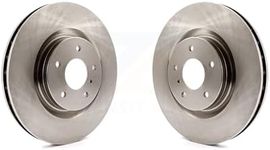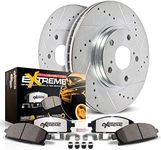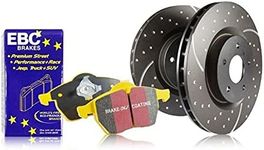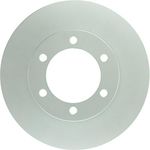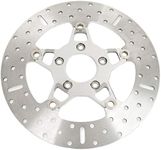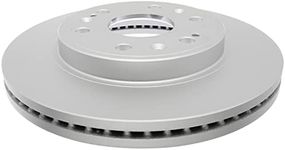Buying Guide for the Best Brake Rotors
Choosing the right brake rotors is important for your vehicle’s safety and performance. Brake rotors are a key part of your braking system, working with the brake pads to slow down or stop your car. When picking brake rotors, you should consider your driving style, the type of vehicle you have, and the conditions you usually drive in. Understanding the main features of brake rotors will help you make a choice that keeps your car safe and running smoothly.Rotor MaterialRotor material refers to what the brake rotor is made from, and it affects how well the rotor handles heat, resists wear, and performs under stress. The most common materials are cast iron, which is durable and affordable, and composite or carbon-ceramic, which are lighter and handle heat better but are more expensive. For everyday driving, cast iron is usually enough, but if you drive in demanding conditions or want better performance, you might consider composite or carbon-ceramic. Think about how much you drive, the weight of your vehicle, and whether you need extra performance for things like towing or sporty driving.
Rotor Type (Solid, Vented, Drilled, Slotted)Rotor type describes the design of the rotor’s surface and structure. Solid rotors are simple and best for lighter vehicles or rear wheels, while vented rotors have internal channels to help cool the brakes, making them better for heavier vehicles or more frequent braking. Drilled rotors have holes to help with heat and water dissipation, which can be useful in wet conditions, while slotted rotors have grooves to keep the brake pad surface clean and improve performance. If you mostly drive in the city or on highways, solid or vented rotors are usually fine. If you drive in wet areas, tow heavy loads, or want better performance, drilled or slotted rotors might be a better fit.
Rotor Size (Diameter and Thickness)Rotor size includes both the diameter and thickness of the rotor, and it affects how much heat the rotor can absorb and how much stopping power it provides. Larger and thicker rotors can handle more heat and provide better braking, which is important for bigger vehicles or those that carry heavy loads. However, not all vehicles can fit larger rotors, so you need to check what sizes are compatible with your car. If you drive a small car for daily commuting, standard size rotors are usually enough. If you have a larger vehicle or drive in demanding conditions, you might need bigger rotors for extra safety.
Coating and Corrosion ResistanceCoating and corrosion resistance refers to any protective layer on the rotor that helps prevent rust and extends the life of the rotor. Some rotors come with special coatings that protect against moisture and road salt, which is especially useful if you live in a wet or snowy area. If you want your rotors to last longer and look better, or if you drive in harsh weather, choosing rotors with a good protective coating is a smart move.
Compatibility and FitmentCompatibility and fitment means making sure the rotor matches your vehicle’s make, model, and year. Not all rotors fit all cars, so it’s important to check your vehicle’s specifications before buying. Using the wrong size or type can lead to poor braking performance or even damage. Always double-check your car’s requirements and, if in doubt, consult your owner’s manual or a trusted mechanic to ensure you get the right fit.
